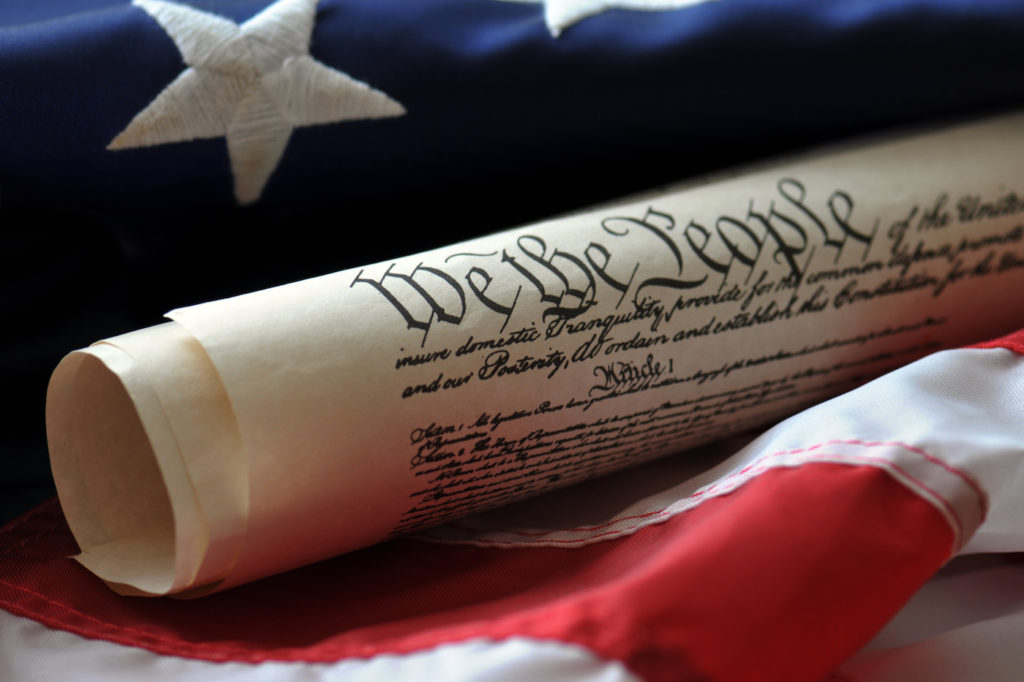The unauthorized release of Justice Alito’s draft majority opinion in Dobbs v. Jackson Women’s Health Organization has caused storms of controversy. One criticism of the draft opinion is that it is not an originalist decision. For example, Professor Lawrence Solum, probably the leading scholar on originalism, bluntly claimed that “Judge Alito’s draft opinion in Dobbs is not an originalist opinion.”
This criticism is powerful because originalism has become a leading theory of constitutional interpretation. If, therefore, the criticism is correct, then the draft Dobbs opinion is incorrect from the perspective of many judges, scholars, lawyers, and Americans. Moreover, all of the justices who appear to have (at least at one point) joined the draft opinion (or its descendant) have described themselves as originalist, so their failure to craft an originalist opinion appears to be unprincipled.
Critics of the draft opinion claim that it fails to identify the Constitution’s original meaning and to employ that meaning to decide whether the Constitution protects a right to abortion. These two aspects are important because, as many originalists (including myself) have argued, they are the defining characteristics of an originalist decision.
Instead of employing originalism, critics argue, the opinion accepts the existence of the doctrine of substantive due process and employs a version of that doctrine derived from Washington v. Glucksberg (1997). Substantive due process doctrine is the product of a controversial interpretation of the word “liberty” in the Fourteenth Amendment that arose in the early twentieth century. Using this doctrine, the Supreme Court identified some activities, such as the right to marry, to have children, and to use contraception, as “fundamental rights.” The Supreme Court in Glucksberg ruled that assisted suicide was not a fundamental right based on a narrow view of substantive due process doctrine, which was that assisted suicide was not “objectively, deeply rooted in this Nation’s history and tradition.”
Start your day with Public Discourse
Sign up and get our daily essays sent straight to your inbox.The Dobbs draft follows Glucksberg’s approach. The first part of the draft opinion reviews the history of the American legal system’s treatment of abortion and concludes that “a right to abortion is not deeply rooted in the Nation’s history and traditions.” The second part of Justice Alito’s opinion then evaluates whether the Supreme Court should follow Roe and Casey because of stare decisis, which is the legal principle that courts will adhere to precedent. Justice Alito employed five factors to conclude that these “traditional stare decisis factors do not weigh in favor of retaining Roe or Casey.”
With these two aspects of the Dobbs draft in mind, Professor Solum suggests that “Alito’s opinion is straight from Scalia’s playbook; it is living constitutionalism in its constitutional pluralist flavor from top to bottom. The Glucksberg approach assumes substantive due process but attempts to cabin it on the basis of historical practice.” Similarly, Professor Steven Calabresi, a founder of the Federalist Society and a prominent originalist, criticized the opinion as non-originalist because it employed the mistaken approach of substantive due process and it did not take the correct originalist course of explaining that abortion was not protected by the Privileges or Immunities Clause, which is another Clause in the Fourteenth Amendment.
Misplaced Criticism
In my view, the criticism expressed by legal scholars such as Solum and Calabresi is misplaced and the draft majority opinion is an originalist opinion—or at least it is reasonable to view it as such in the context of our current constitutional practice—and to see this, one needs to take on board two propositions. The first proposition is that originalism contains a place for stare decisis, and the second is that American constitutional practice is currently eclectic.
Justice Alito’s draft Dobbs opinion is consistent with originalism because the best conception of originalism, one it appears most originalists today follow, includes a robust place for stare decisis.
Justice Alito’s draft Dobbs opinion trades heavily on precedent, and it spends little time articulating and applying the original meaning: how is that consistent with originalism? It is consistent because the best conception of originalism, one it appears most originalists today follow, includes a robust place for stare decisis. The practice of precedent is baked into the “judicial Power” that federal judges wield. This means, as I have argued, that federal judges are required to create and are bound by constitutional precedent. As a result, it is constitutionally required for judges to explain their decisions in terms of their relationship to existing precedent and to provide reasons for distinguishing, narrowing, and—as in the case of the draft Dobbs opinion—overruling precedent.
Therefore, an opinion’s focus on precedent—and apparent neglect of the Constitution’s original meaning—by itself is not evidence that the opinion is not consistent with originalism. The draft Dobbs opinion appropriately grapples with existing precedent, most of which is nonoriginalist. It evaluates the precedent in terms of the Constitution’s text, substantive due process doctrine’s Glucksberg historical analysis, and in terms of the incorrect precedents’ viability under principles of stare decisis.
This is related to the second proposition: current American constitutional practice is eclectic because it contains both originalist and nonoriginalist aspects. This description is widely accepted by all sides in the debates over constitutional interpretation. One need look no further than many of the Supreme Court’s decisions and the reasoning used to justify those decisions. There are large swaths of constitutional law, most originating from the period of the New Deal through the 1980s, that are nonoriginalist. For instance, the New Deal Court created the substantial effects test as a broad, nonoriginalist interpretation of the Interstate Commerce Clause. The substantial effects test allows the federal government to regulate aspects of American life that are wholly intrastate, like Ohio farmer Roscoe Filburn’s own consumption of his own farm’s wheat, in Wickard v. Filburn (1942). Though that test has been limited in recent years, it continues to be the law.
A Three-Step Program for Originalism
This situation, where our constitutional practice contains both originalist and nonoriginalist aspects, is what I have labeled “step two” in the development of American constitutional practice toward a fully originalist practice. Stepping back, it is helpful to think of the progression toward a fully originalist constitutional practice as having three basic stages.
The first stage is where originalist reasons and decisions are exotic. The legal system employs other “modalities,” such as first-order ethical judgments, to arrive at nonoriginalist decisions. This characterized American constitutional practice from the New Deal up to the 1980s. But we are currently not in step one.
The second stage in the development of our legal practice, in which we currently find ourselves, features a combination of originalist and nonoriginalist aspects. Today, originalist arguments and decisions are not only common features of our legal practice; to many, they are essential features, while to others, they are (at most) valuable features. Yet, our constitutional practice continues to employ nonoriginalist arguments and to reach nonoriginalist decisions, and some of its key participants explicitly employ nonoriginalism. Our current practice, therefore, is an eclectic mix that has not (yet) reached step three.
Key aspects of our constitutional practice and a critical mass of participants are moving toward originalism, since originalism exerts a gravitational pull.
However, our constitutional practice is characterized by more than just the statistical commonality, or prevalence, of originalist practices. We are currently in a transition stage to step three because key aspects of the practice and a critical mass of participants—the practice’s center of gravity—are moving toward originalism, since (as I explain below) originalism exerts a gravitational pull. This means that judges and other officers are giving originalist facets of our practice priority, and marginalizing nonoriginalist facets.
The third stage, which we have not yet reached, is a fully originalist practice. If—or is it when?—we reach it, step three would continue to engage in the standard practice of stare decisis, but those precedents largely would be faithful applications of the Constitution’s original meaning. In other words, the bulk of precedent in stage three will be originalist precedent.
Our Current “Step-Two” Context
Justice Alito’s draft Dobbs opinion is a reasonable approach in our current context of step two. Abortion, Roe, and Casey exist in a body of law heavily populated with nonoriginalist precedent. American constitutional practice at step two would not (yet) recognize the authority of a patently originalist Dobbs opinion. Instead, an appropriate response in our step-two world is to work within the existing eclectic practice to move the practice to fully realize originalism.
So, what role does originalism play in step two? Most importantly, originalism exerts a gravitational effect that pulls errant doctrine back toward the original meaning. It does so through a number of tools, and the tools employed and how they are employed depend on the context. Such tools include the Constitution’s text and structure, which are components of the original meaning. For instance, Chief Justice Roberts’s opinion in NFIB v. Sebelius (2012) employed both the Commerce Clause’s text and the structural principles of federalism and limited and enumerated powers, to rule that Congress lacked the commerce power to regulate inactivity (in that case, the nonpurchase of health insurance). The Chief Justice’s opinion is not an articulation of the clause’s original meaning and application of that meaning, and that would be a reason to criticize it if Commerce Clause jurisprudence was in originalist step three. However, in the context of step two, where the law is eclectic, his opinion moved the law back toward the original meaning using text and structure.
If and when our constitutional practice reaches step three—when it is an integrated, coherent, originalist practice—then it will be appropriate to criticize judges who fail to articulate and apply the Constitution’s original meaning in their decisions. Our practice will no longer be eclectic. However, because of originalism’s commitment to stare decisis, judicial opinions will continue—increasingly and sometimes entirely—to trade in precedent. This is because the practice of precedent is one of our Constitution’s key mechanisms to implement the original meaning (the other being legislation). Originalist precedent mediates the gap between the original meaning and the key facts presented in cases, and over time precedent will create thick originalist constitutional doctrine that itself will provide coordination points for officials and Americans to live together justly and peacefully.
Justice Alito’s draft Dobbs opinion is reasonably characterized as an originalist decision because it uses the tools of text and stare decisis to move errant constitutional doctrine back to the Constitution’s original meaning in the context of our current eclectic constitutional practice. This is an appropriate dance move in the originalist three-step.













